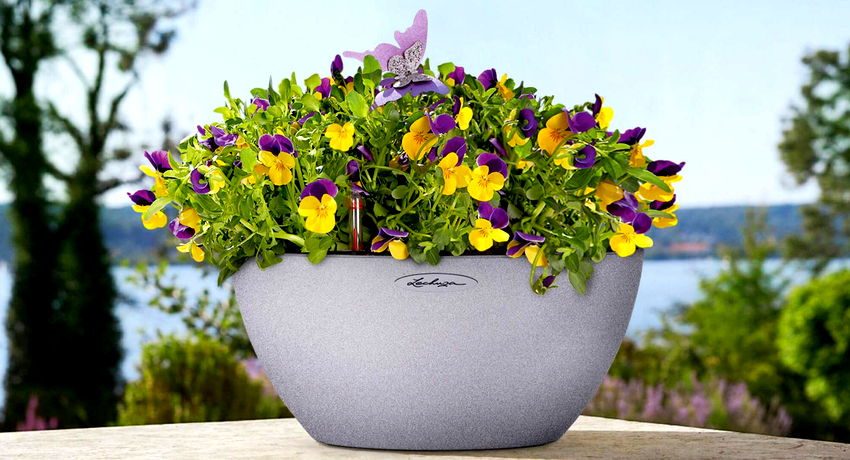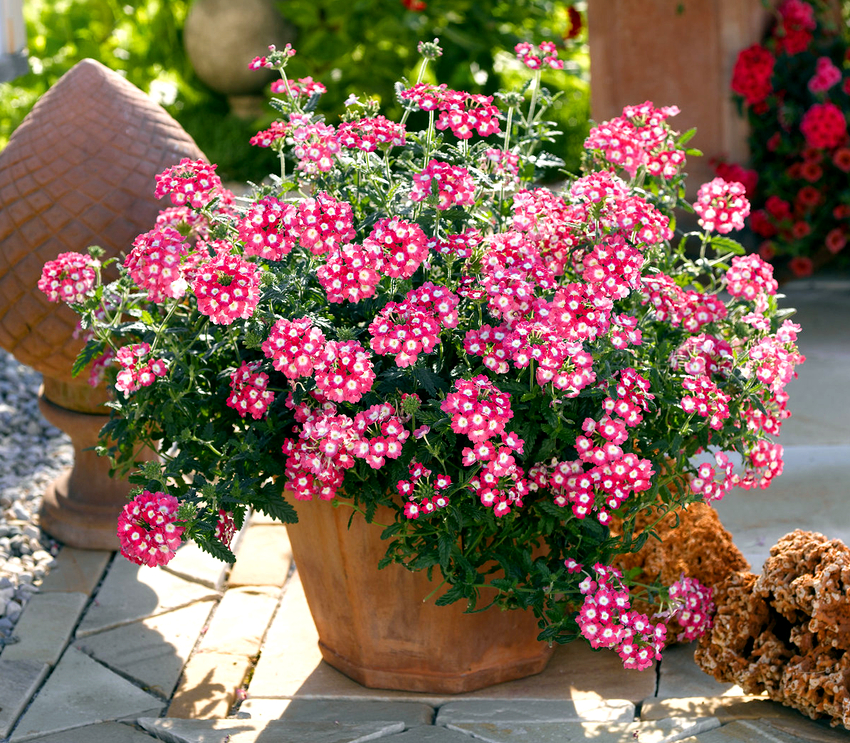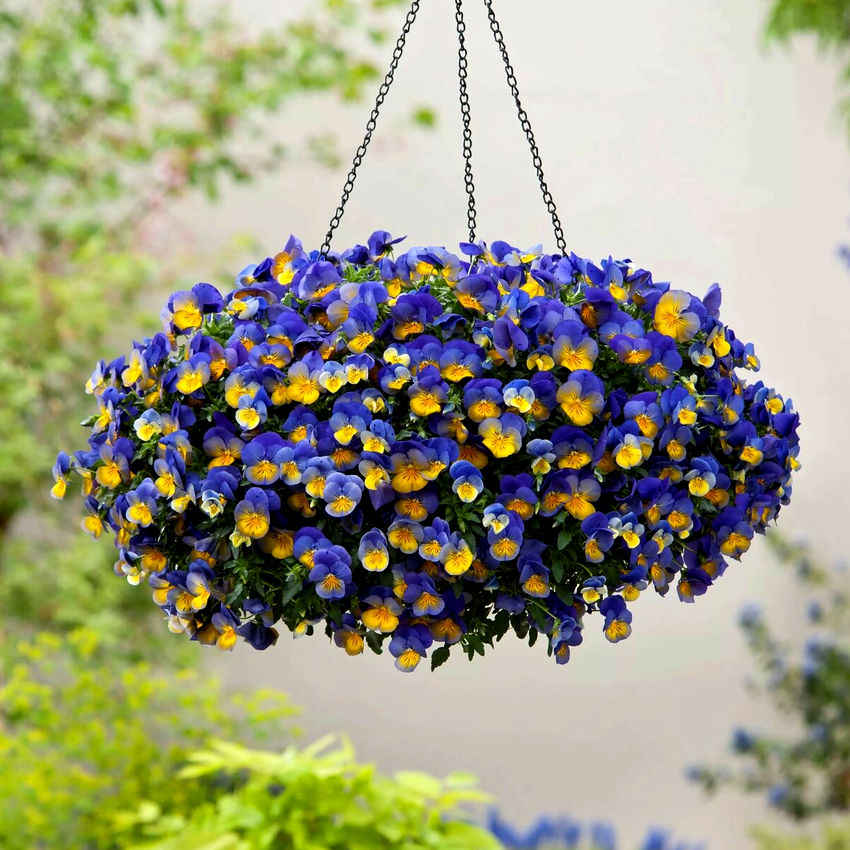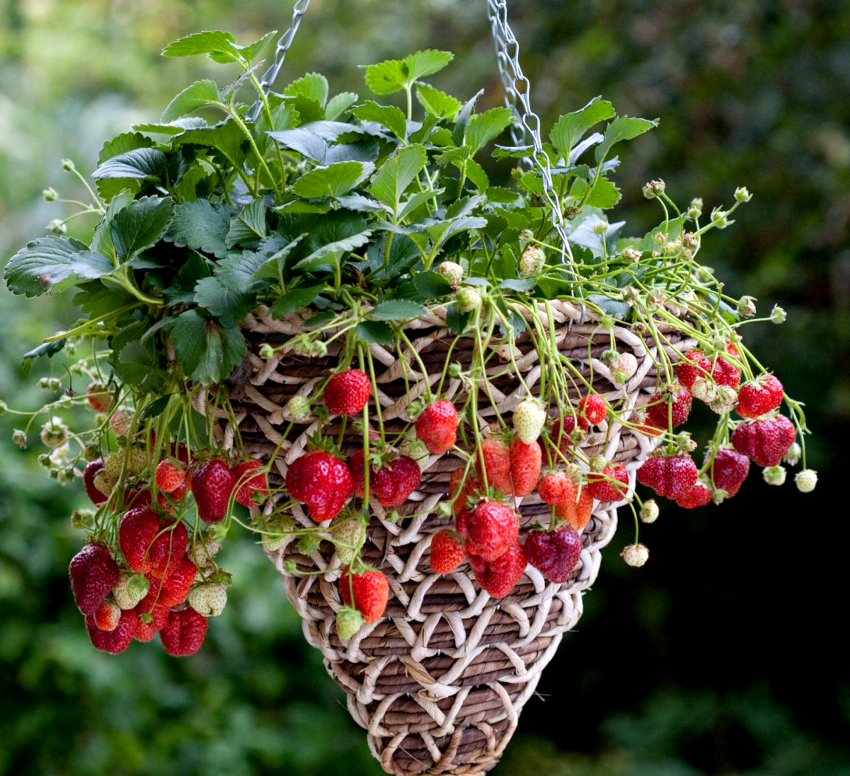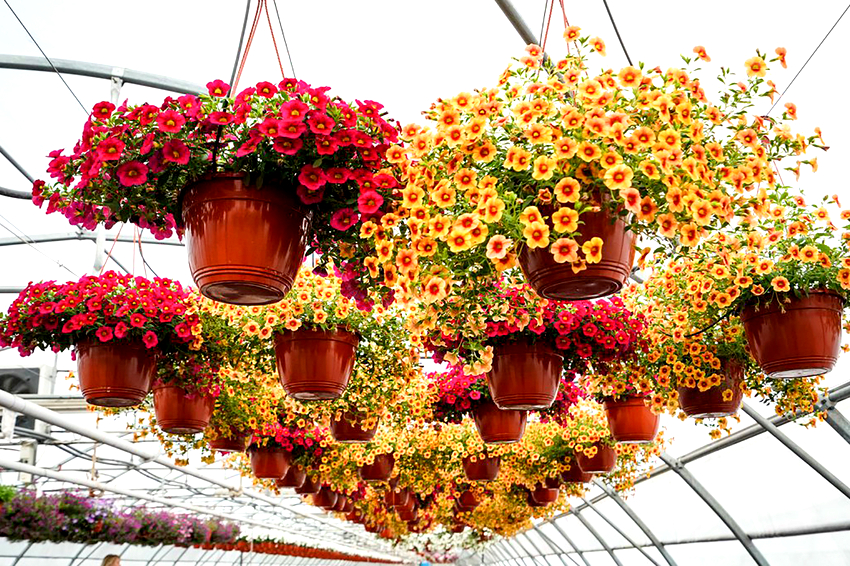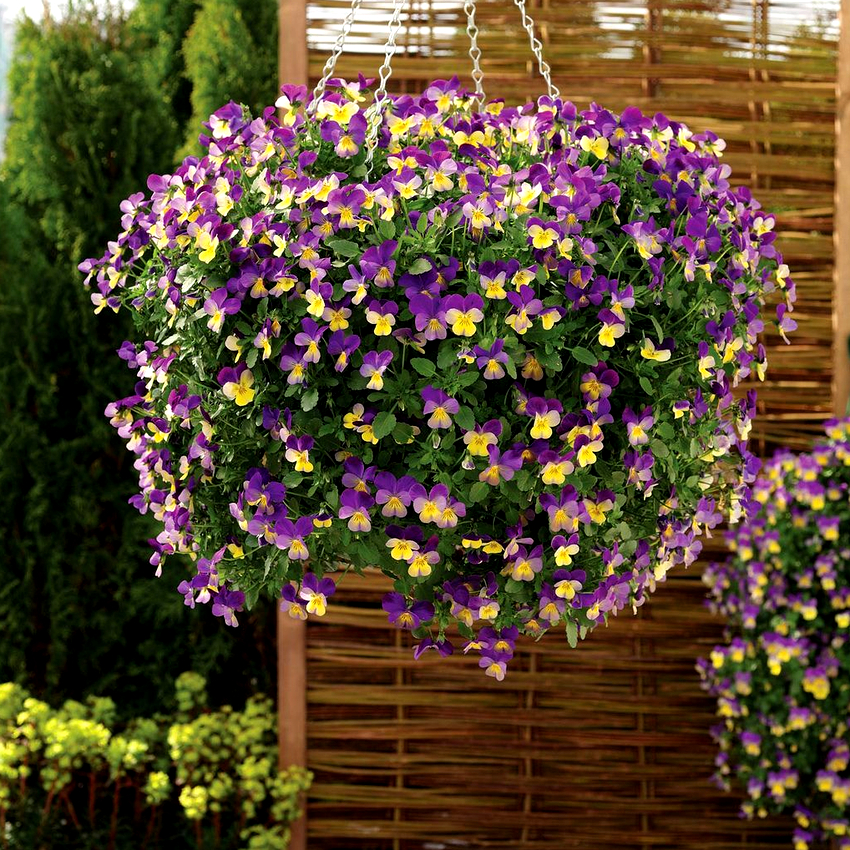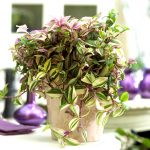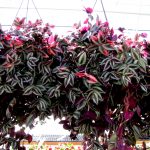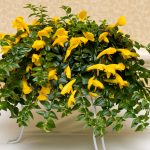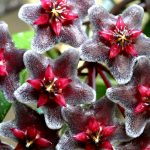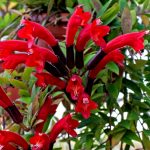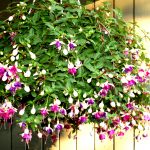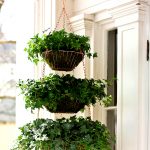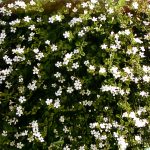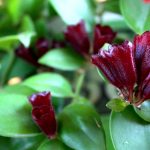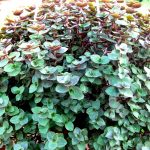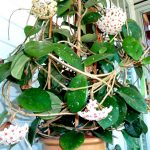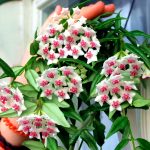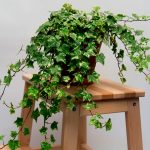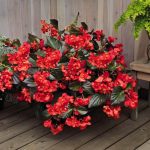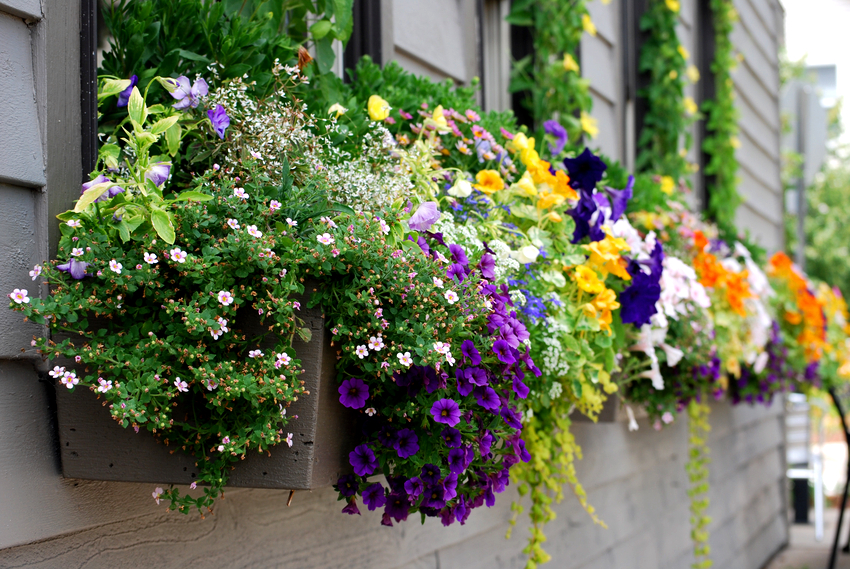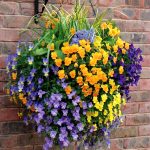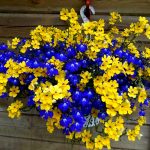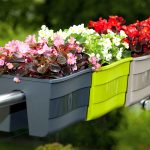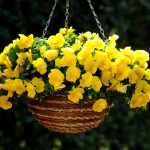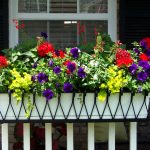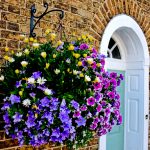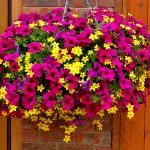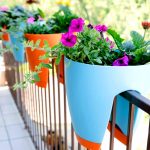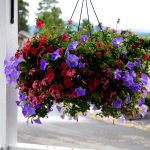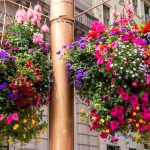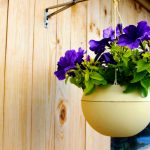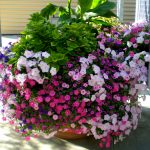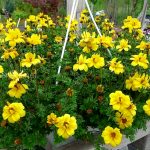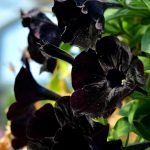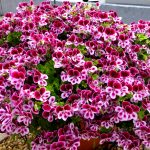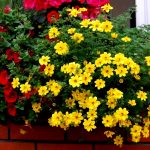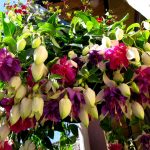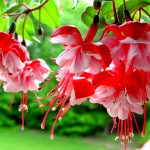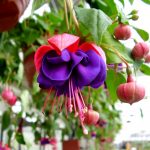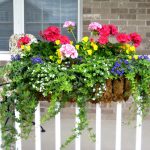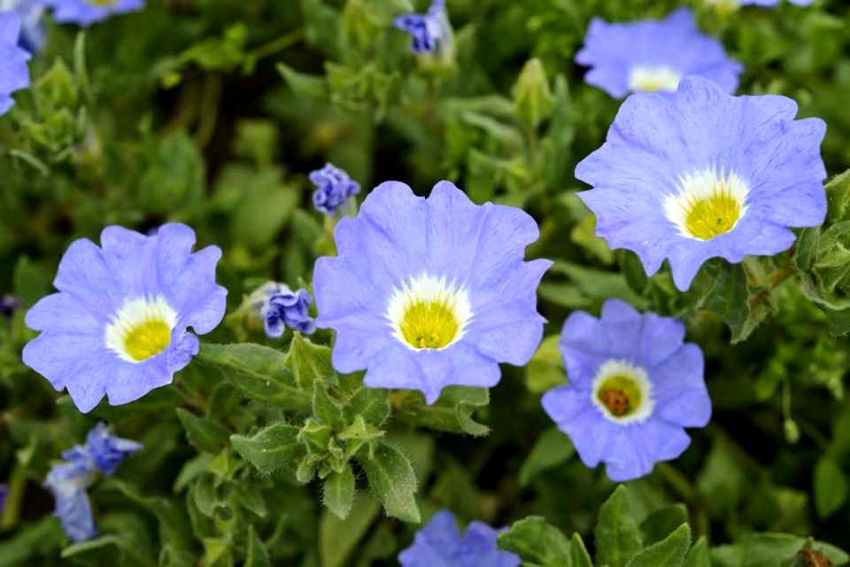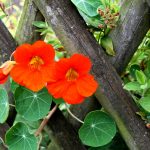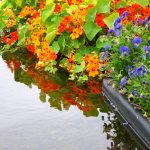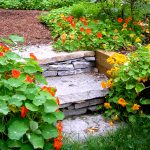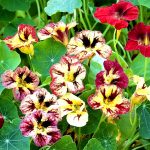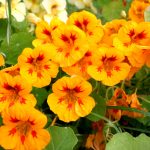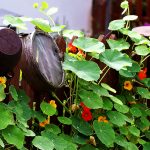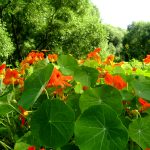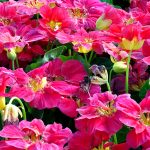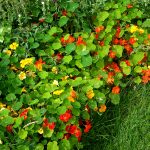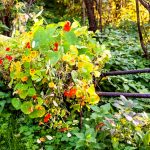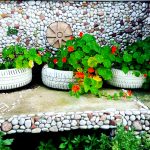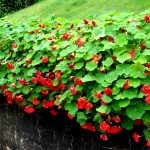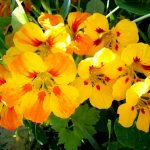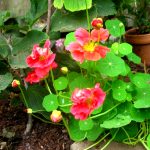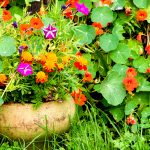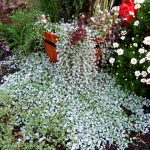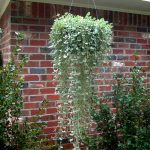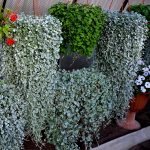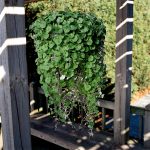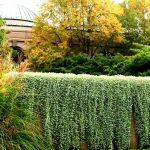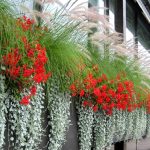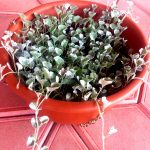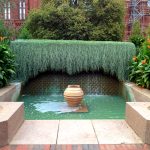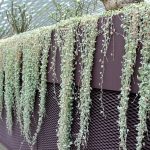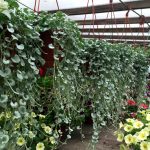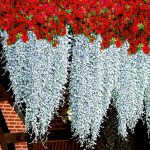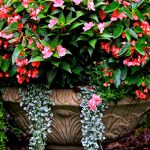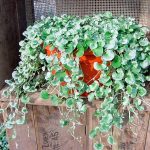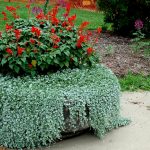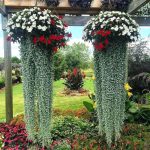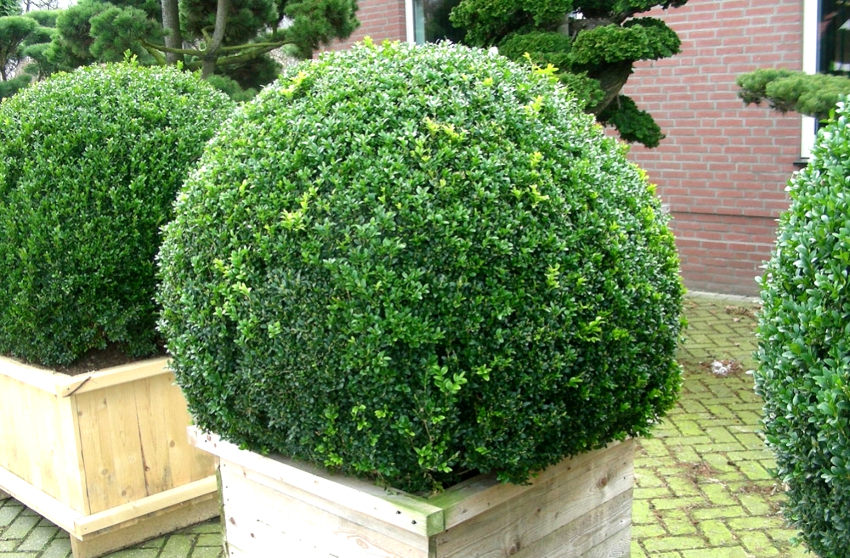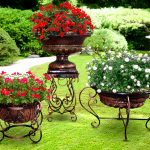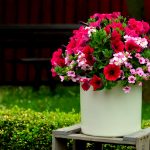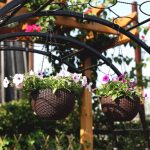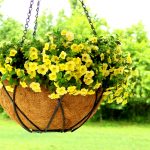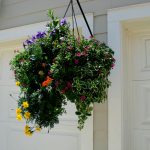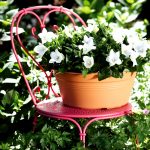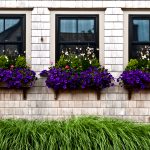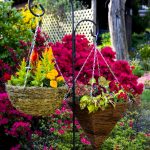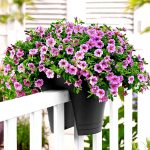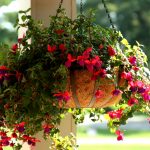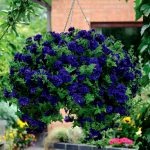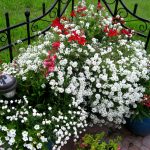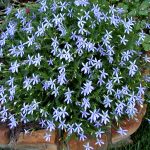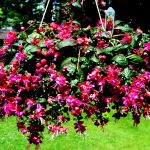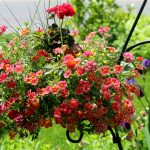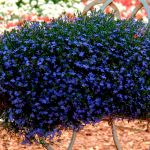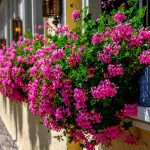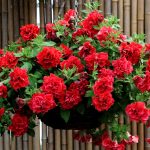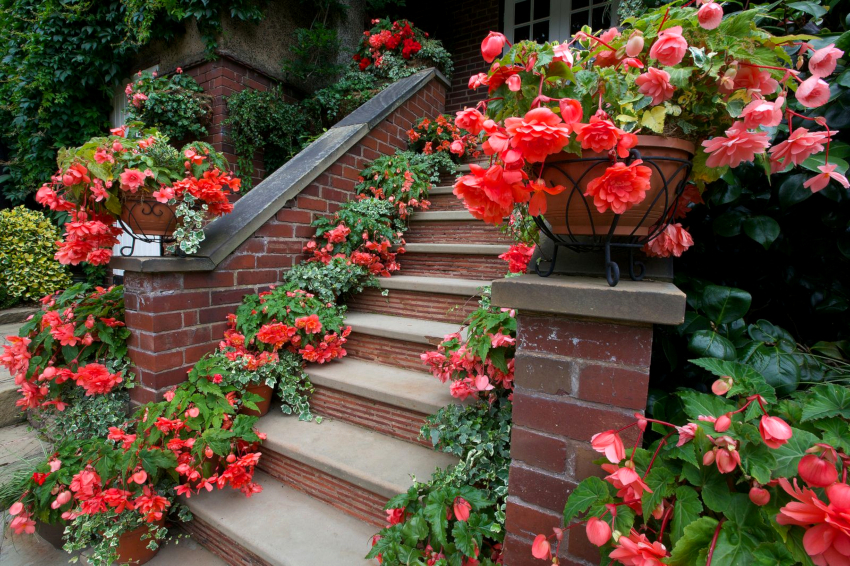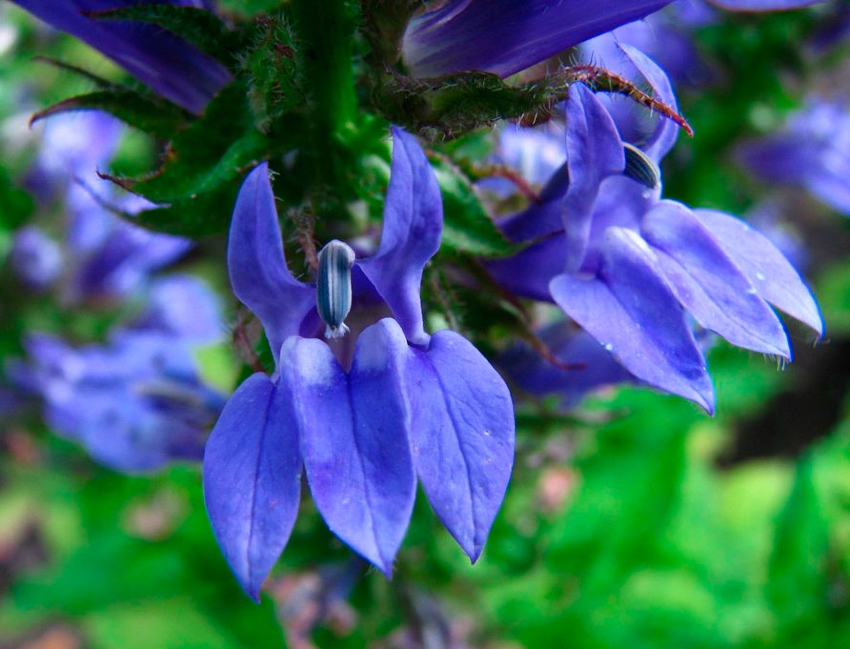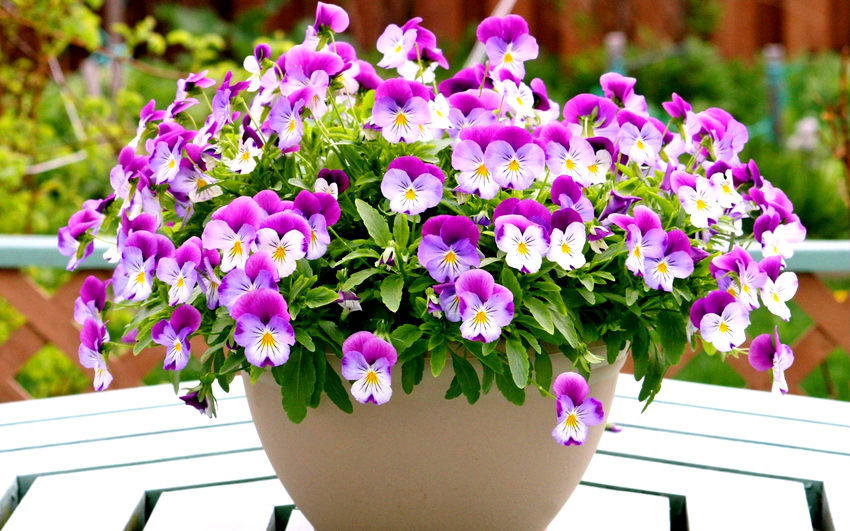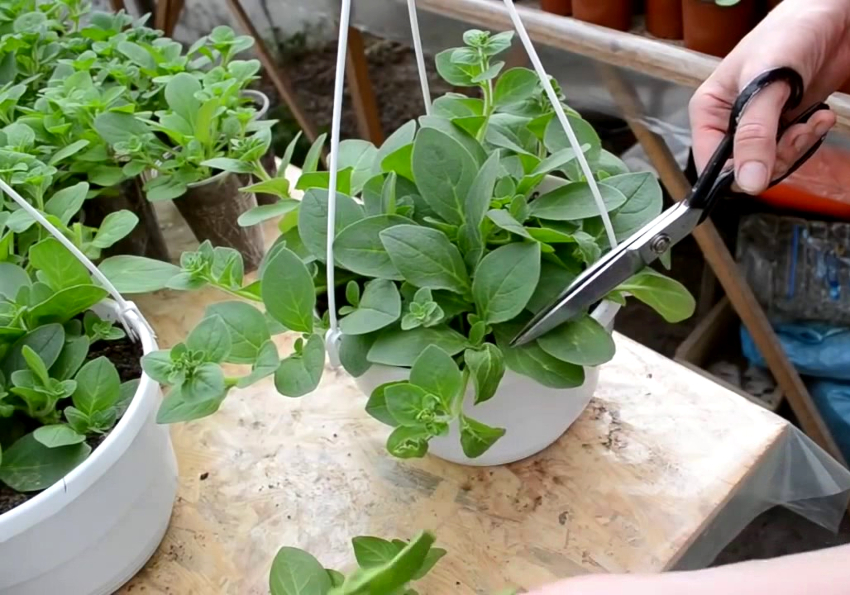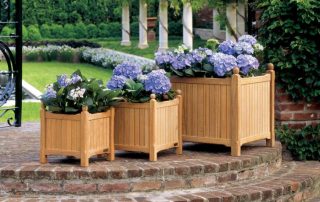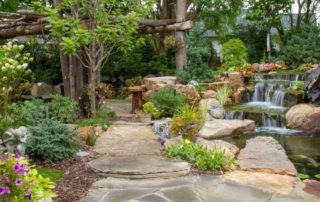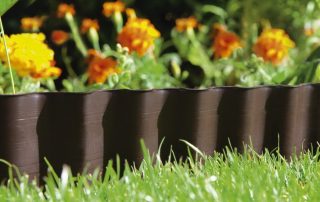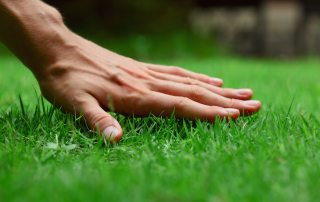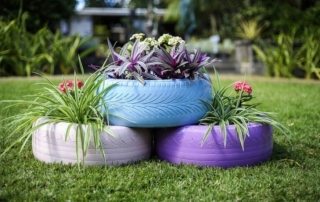Botanical and aesthetic definitions of the concept of "flower" are completely opposite: respectively, "plant propagation organ" ... and "miracle of nature". It is the "miracle" that contains a lot of vivid feelings and emotions: perfection, harmony, delight, fragrance, etc. So why not surround yourself with this unique natural gift? The desire to contemplate the beautiful is natural for a person. That is why flowers for pots are so popular today.
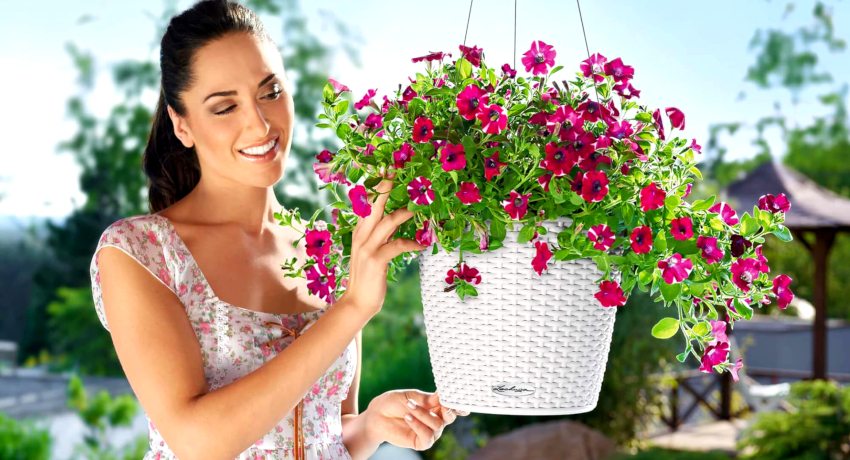
Given the abundance of flowers in specialized stores, it will not be difficult to find the necessary plants for the local area
Content
- 1 Street flowers in pots as a decorative element of the landscape
- 2 Flowers in pots: a composition pleasing to the eye
- 3 Flowers for hanging pots: decorative and not only
- 4 Ampel flowers for pots: hanging variety of shapes and colors
- 5 Perennial ampelous flowers: cultivation features
- 6 Ampel annuals: how to grow seasonal flowers
- 7 Spherical plants: a highlight of landscape design
- 8 Garden design ideas: ampelous plants as part of compositions
- 9 Street flowers: rating of the most popular plants
- 10 Flowers for pots: caring for ornamental outdoor plants
- 11 Ampel color catalogs: how to use them correctly
Street flowers in pots as a decorative element of the landscape
Many strive to have a house in the country. This is an opportunity to spend a weekend closer to nature, in silence and solitude, away from the bustle and crowded streets. An obligatory component of a personal plot is outdoor plants. Someone bought a building in an already green area and simply made adjustments or additions, but more often the arrangement is done from scratch.
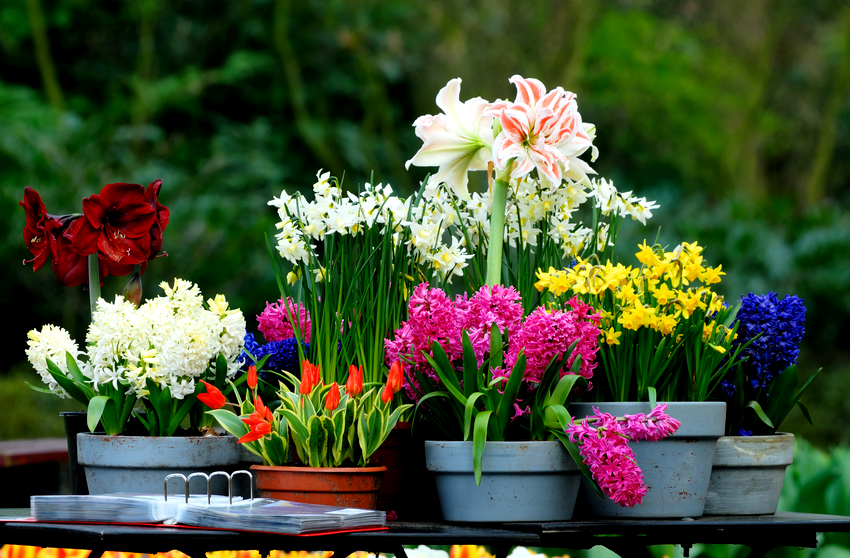
If it is not possible to break a real flower garden, then you can always create a greenhouse of flowers in pots
Not a single design development, created by a professional or an amateur, is complete without flower beds. They make the structure bright, interesting and bring living natural colors to the surroundings. Flowers are a simple, unique way to decorate the most humble landscape. And it is available to everyone: if the composition of the soil, lack of space, or any other reasons do not allow you to break a flower garden, you can create a real greenhouse of flowers in pots. On the street, it is appropriate to place them on the ground, along paths, benches, gazebos ... Or fix them on a fence, pergola, terrace and even on the wall of the house. The structure, entwined with flowering plants, looks truly fabulous.
Even if there is no country house, you should not deprive yourself of the pleasure of being among the flowers in the summer. Plant pots can be fixed on the outside of the balcony, loggia and even on the window slope.In special stores, it is easy to find both the containers themselves and various accessories for hanging and installation. A pot with a ready-made flower is available, but you can go from a seed or sprout to a flowering avalanche.
The version of the finished plant seems easier only at first glance. It is important to organize the adaptation correctly, otherwise the plant will lose its attractiveness. The second way is longer, but with proper care, the beginning of the growing season will give a lot of pleasure.
Flowers in pots: a composition pleasing to the eye
The potting method has several advantages. And it's not just about being accessible to everyone. There are several more nuances that allow you to have an excellent result with a limited amount of effort:
- no need to weed out weeds;
- loosening the soil is much easier to perform than when planting in open ground;
- the ability to move the plant (relevant at abnormal temperatures and other weather phenomena);
- convenient watering;
- uncomplicated transplant process.
In order for a flower to give aesthetic pleasure, it must be properly planted (or transplanted), select the appropriate soil mixture, top dressing and a pot.
Important! Before planting (and even buying a flowering plant), it is imperative to consult how much pot volume is required for a particular plant.
The volume can be determined by both the type of flower and the age (for perennials). Some plants also require a specific material to make a container.
How to create a beautiful flower arrangement if the pots are dissimilar? Here pots come to the rescue - decorative vessels that do not have drainage holes and are intended for installing flower pots in them.
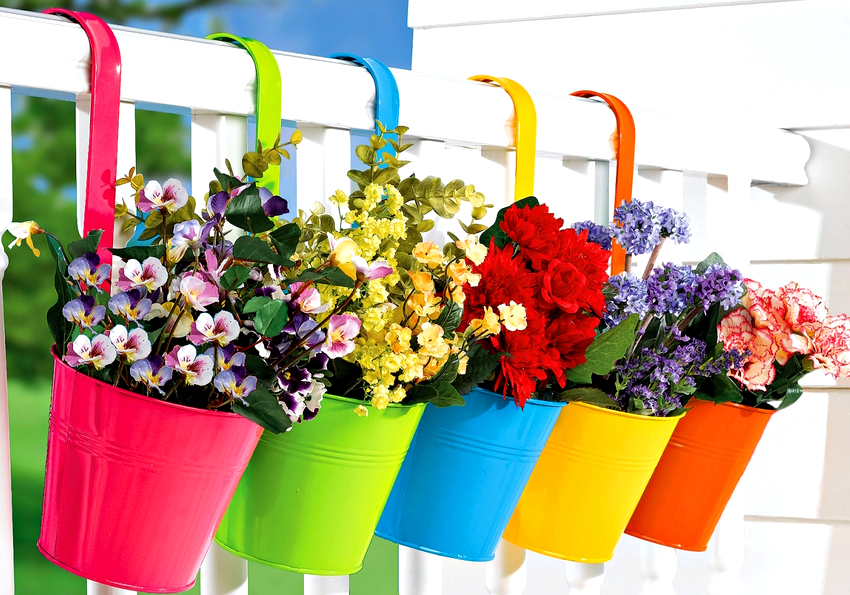
Even if the flowers are in dissimilar pots, you can create a beautiful flower arrangement with the help of the planter.
To the question of what can be planted in a flowerpot, the answer will be very long if you list the types of plants, or unambiguous - that's it. It is these decorative elements that sometimes combine various street flowers in pots into an interesting composition.
Recently, holes have been made in plastic pots, the products have turned out to be multifunctional - hanging pots-pots.
Flowers for hanging pots: decorative and not only
The desire to decorate with flowers not only the ground part, but also the upper tiers of the site has led to the popularity of hanging options for pots. In this position, the most suitable flowers for pots are hanging. It is the flowing mass of flowers that creates an interesting decorative effect.
Those who wish not only to decorate the area around the house, but also to benefit, can plant in hanging pots ... berries and vegetables. Strawberries are a great option. During the flowering period, it creates an original green cap of large leaves, decorated with white or pink flowers. The berries ripening on the stems descend, forming a strawberry “rain”.
Cucumbers of all kinds, as well as long-stemmed tomatoes, can also be useful garden decorations. Chili pepper looks original in hanging pots. It must be planted tightly, then both the green mass and the ripening fruits will look more impressive.
Important! Growing conditions in open field and in pots differ significantly. In the latter case, the vegetables may not have enough organic matter due to the small amount of soil. It is necessary to periodically feed vegetables and berries in pots.
For those who are completely alien to the feeling of commercialism, it is worth using ampelous flowers for pots.These are plants that have hanging or creeping stems. The flowers are small or medium, densely located on the stems. Among the ampelous there are few non-flowering species.
Ampel flowers for pots: hanging variety of shapes and colors
Ampel plants in the spring abound in almost all flower shops. Many people prefer to purchase ready-made options so that the site immediately shines with bright vibrant shades. It will be useful for novice decorators to get acquainted with the most common plants in advance. This is not difficult, since a large number of photos of ampelous flowers for pots are posted on the Internet, and the names will easily be remembered when carefully examining the plants.
The most common type of flowers for hanging pots is petunia. Such a high popularity is due to the following features of the plant:
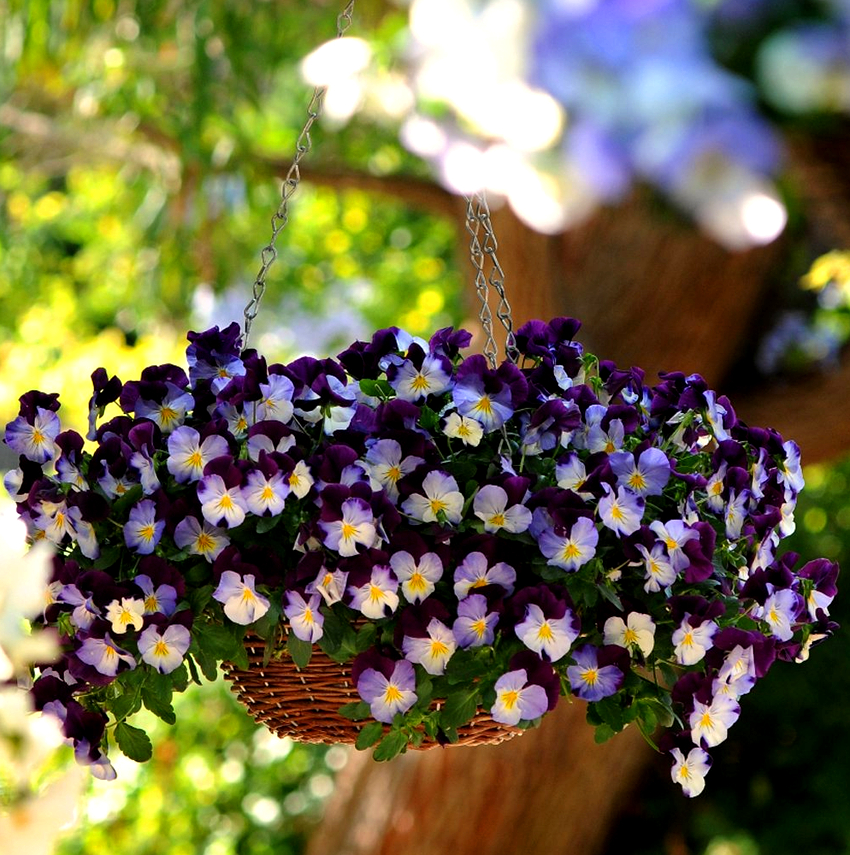
In order for the site to quickly shine with bright and lively shades in the spring, you can not grow, but buy ready-made versions of ampel flowers
- the flower is quite unpretentious;
- has a wide variety of shades;
- has a long flowering period - from spring to late autumn.
The flower loves slightly acidic soil, good lighting, sufficient watering. Even if the plant has withered, you can reanimate it by shading it for the recovery period and increasing watering.
Very similar to surfiniya petunia. Externally, plants can only be distinguished by the more abundant flowering of the latter. The conditions for a normal growing season are the same.
Until recently, until the dominance of petunias came, the explanation of what ampelous plants were began with pelargonium (geranium). This flower has many advantages:
- drought resistant;
- does not require frequent watering;
- has phytoncidal properties;
- blooms from early spring to late autumn.
Grows on clay soils, loves the sun.
Ceropegia can also be a good choice for beginners. A completely unpretentious flower, not even burdening with the need for frequent cutting of dry stems. It is only necessary to plant it in a slightly acidic soil with the addition of humus and place it in the sun. Ceropegia "suffers" from even slight penumbra.
Helpful advice! It is necessary to apply top dressing to the soil where ampelous flowers grow with knowledge and caution. The principle "the more the better" does not apply at all to this type of plant.
Perennial ampelous flowers: cultivation features
Ampel flowers, like other species, can be annual and perennial. In this section, more attention will be paid not so much to individual plants as to the cultivation features.
Which plants to prefer: perennial or annual? Perennial ampelous plants for the home require the preservation of individual "individuals" during the winter. That is, with the onset of cold weather, one or more sprouts must be planted in a pot and brought into a warm room.
Related article:
DIY flowerpot: original decoration of the flower zone
A cache-pot made of fabric, paper, wood, cement, branches, ropes, waste materials and other improvised items. Various options for decorating the product.
Providing proper care during the fall and winter period is very important. Despite the cessation of active growth, flowers must be provided with a certain climate: humidity, temperature, illumination. With the arrival of spring, the plant is again taken out into the street. Among perennials, preference is often given to those species that quickly increase green mass and acquire decorativeness. These include:
- Column. The people call the flower "goldfish" based on the similarity of color and shape of the peduncles. The stems are thick, but fragile, reaching 80–100 cm in length.
- Ivy.The flowers of this plant are modest, yellowish, the decorative effect is created by green glossy leaves.
- Tradescantia. The leaves provide the decorative effect of this plant.
Many perennial flowers for pots outdoors require special conditions. Most often this is protection from direct sunlight, but not shading as such, but diffused light. This must be taken into account when choosing a place for such plants.
Ampel annuals: how to grow seasonal flowers
From the same point of view (evaluating the growing process), consider annual flowers. You can breed them in three ways: purchase seeds, sow them in order to obtain seedlings, which are subsequently planted in pots; buy seedlings, place them in a container for seasonal growth; get a ready-made flower.
Important! When purchasing seeds for growing flower seedlings, you must follow the recommendations for sowing dates. Being late even by 1–1.5 decades can affect the active vegetative process.
Each option has its own pros and cons, which can only be listed: savings, additional waste of funds, long waiting for the result, difficulty of adaptation, the ability to experiment, satisfaction from the process and achievement of the goal ... Everyone himself determines the acceptability of the conditions. In any case, the result will be the same - beautiful flowers for pots on the street for the whole summer.
If we try to make a comparison between the growing season and the peculiarities of caring for perennial ampelous and annuals, we get the following:
- care during the season is generally the same, not counting the nuances for different species and those and other colors;
- one-year-olds are absent in winter, perennial ones need care;
- annuals have more abundant flowering;
- summer plants are more resistant to drought and high temperatures.
It is worth paying attention to the fact that more and more new types of annual ampelous plants appear in flower shops, surprising with their unique beauty. Among them, it is worth highlighting the hybrid petunia - calibrachoa. The flowers are smaller than those of the progenitor, but there are many more of them. Stems are longer, can reach 1.5–2 m, and become lignified.
Bacopa flowers are a miracle novelty. Photos on the Internet show fluffy green stems dotted with lots of delicate white flowers. With external fragility, the plant is resistant to high temperatures, drought and excessive moisture.
We decorate the site with "bells": Nolan's flower in the decoration of the territory
Nolana hanging flowers can become a wonderful decoration of the infield. This plant appeared not so long ago in household plots, but the demand for it is constantly increasing, since the plant has both high decorative qualities and good resistance to changes in humidity, temperature, and strong winds.
Nolana is a "bell". Indeed, in this ampelous plant, the peduncles resemble bells in shape and color. Small, up to 5 cm in diameter, with carved edges, flowers come in blue, blue and purple shades. During the flowering period, Nolana emits a pleasant aroma. The leaves are green, succulent, which allows the plant to survive in conditions of significant drought. The flowering period is quite long - from mid-June to the onset of sub-zero temperatures. Creeping stems, one plant can cover up to 1 m².
On the Internet, in the photo, Nolan's ampelous flowers are represented by several types: blue inflorescences with a yellow center, blue inflorescences with a yellow center and a white throat, purple with small white blotches along the pistil.
It is worth noting that this flower has a tap root system that practically does not branch out to the sides. This must be taken into account when choosing a container for planting.
For lovers of bright design: ampelous nasturtium
Nasturtium occupies a special place among ampelous plants. Looking at a pergola, a gazebo or a balcony twisted almost to the top, you might think that this perennial plant has greened the structure so much in five years. In fact, one summer season is enough for this nasturtium.
In total, there are 90 species of this plant. Among them there are 25 cultural ones. We use 4 types as decorative design:
- small nasturtium - a low plant for flower beds and front gardens;
- Canarian nasturtium - a liana, which definitely needs support;
- shield-bearing nasturtium - a shrub with creeping stems;
- large nasturtium, gives shoots up to 70 cm.
The last three types can be used as ampelous flowers for pots in the country. Pictures with titles on the Internet will help you choose the right option.
The flowers of this plant can be yellow or orange. In large nasturtium, they are large and bright. Canary and thyroid have yellow and small ones.
The plant with deep red double flowers was obtained by crossing large and thyroid nasturtium.
Important! A hybrid nasturtium grown from its own seeds will not inherit maternal traits. It is better to purchase seedlings or seeds in specialized stores.
Nasturtium is thermophilic, but it is better to shade the plant in the scorching summer heat. Watering is generally required moderate, more intensive should be used during the budding period.
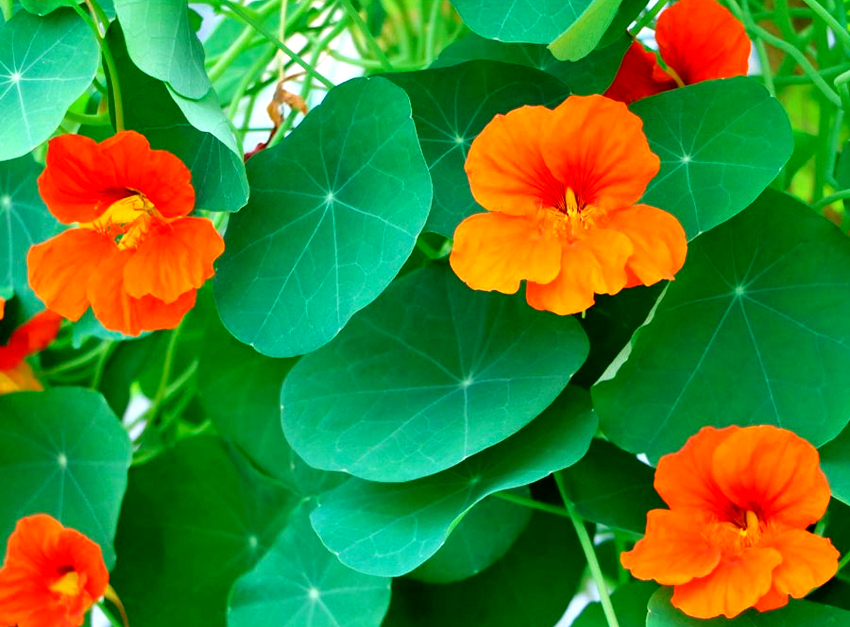
Florists should understand that hybrid nasturtium grown from their own seeds will not inherit maternal characteristics.
Dichondra ampelous: photos of "waterfalls", "backgrounds", "foundations"
Ampel dichondra can be attributed to those plant species that have not yet been fully appreciated. You can meet her more often in those areas that were designed by professional designers. Ampel plants are not only stems strewn with flowers. In particular, dichondra has decorative leaves. The peculiarity of the plant lies not only in their color, but also in the abundant fluffy mass, which the flower, under optimal conditions, can collect in just two to three weeks.
The most common types are the “silvery waterfall” dichondra and the “emerald waterfall”. Densely falling, rather straight stems are really associated with a waterfall. The words "silver" and "emerald" indicate the color of the leaves.
The flower is extremely unpretentious, does not require frequent and abundant watering, and can withstand high temperatures. Likes external spraying with warm water. The emerald look feels comfortable in the shade.
Quite often, these ampelous flowers for pots (photos on the Internet clearly demonstrate this) are used when decorating plots as a background, shading and emphasizing the brightness of other flowering plants. Several dichondras, arranged in a certain order, can form a tent, hedge and other volumetric figures.
Spherical plants: a highlight of landscape design
Globular plants are an excellent element for decorating household plots. They occupy a special position in terms of visual perception. Suspended ampelous ones direct the gaze vertically, planted in the ground - horizontally. Globulars combine focus, focusing attention on themselves.
This is not to say that the choice of globular plants is great. The most common variant is thuja. Evergreen balls planted in pots decorate alleys, facades of buildings, entrances to gazebos, etc. There are also several types of ornamental shrubs that are planted in containers. Their crown by shearing is formed in the form of a ball.
Among the spherical street flowers in pots, the name of which is familiar not only to botanists, it is worth noting chrysanthemum. Its dwarf appearance (namely, this gives the corresponding shape) has small round flowers of various colors and shades.If thuja delights the eye all summer, chrysanthemums will reach their decorative effect only by the end of August - beginning of September. You can admire them for a month and a half. Such a late appearance of pots with chrysanthemums on the site has its own charm: the design is a little fed up, new colors and shapes will be very useful.
Useful advice! Dwarf chrysanthemums are best purchased ready-made, that is, planted in pots. It is quite difficult to achieve a spherical shape on your own without professional skills.
Garden design ideas: ampelous plants as part of compositions
The decoration of the local area with flower arrangements is a familiar phenomenon. Sometimes on a personal plot there is a garden, which looks cheerful and elegant only at the time of flowering. But it can also be decorated with hanging flowers by organizing a small recreation area among the spreading crowns of trees. You can use the following ideas.
Install a cart in an open area (so that the sun's rays penetrate), fill it with pots with ampel flowers. Opposite, in the shade of trees, place a bench. The garden will be filled with colors, and there will be a great place for privacy and relaxation.
Take your time to cut down a dead tree! On its branches you can hang pots with ampelous flowers - the original oasis will delight you with raging greenery and colorful flowers for the whole summer.
In open areas of the garden, you can arrange old tubs (and, if you wish, new ones) and place pots with flowers on them. A walk in such a garden will bring a lot of pleasure.
When creating the compositions proposed above or invented independently, it is necessary to select the right plants so that they complement and favorably set off each other. To do this, you should pay attention to the photo, the names of ampelous plants for the garden and try to purchase specimens that correspond to the image that has developed in the creative imagination or seen on the Internet.
Street flowers: rating of the most popular plants
Flowers in pots for outdoor use can be purchased at the store. Like any product, ampelous flowers can be ranked according to the degree of decorativeness, stability and unpretentiousness, and even according to the features of their functional purpose.
The plant rating given below is compiled precisely on the basis of the listed indicators, to which the price is added.
5. Ivy is in fifth position. It creates a great backdrop for plants with vibrant colors. Different types of ivy have differences in the color of the leaves: dark green, green with white streaks, green with white blotches, etc. The plant is perennial, does not require special care, feels good even in a shaded place.
4. Begonia is next in the ranking. One of the most capricious ampelous plants. Does not tolerate direct sunlight, drafts, requires abundant watering, "suffers" when changing location. With proper care, it pleases with bright colors of warm shades.
3. The third result is for lobelia. Requires regular watering, loves warmth. The flowers are small, can be white, blue or pink. This plant can also be planted as a curb.
2. Verbena is very close to the top of the rating. It feels quite comfortable in direct sunlight, watering is necessary moderate, but regular. The buds are different in color: white, yellow, red, blue.
1. The place of the winner has been occupied by petunia for a long time. The variety of species (with small, large, monochromatic, multicolored buds) and unpretentiousness made it the favorite of many gardeners and florists. A large number of photos of petunias in flower pots, which are a bright and original decoration of areas in design developments, are a clear confirmation of leadership.
Flowers for pots: caring for ornamental outdoor plants
Each flower requires a certain amount of care. But there are general rules that apply to all flowers in pots on the street. In order for a plant to please with a riot of greenery and flowering, the following must be considered:
- Even the most drought tolerant specimens require regular watering. Moistening the soil from time to time will certainly affect the growing season in a bad way.
- On hot days, watering can be increased for all plants. The root system is in a limited amount of soil; the plant cannot independently extract additional moisture.
- Mulching should be used as moisture retention.
- Once every two weeks, it is necessary to feed the plants. If this is not done, in the second half of summer, the intensity of flower development will noticeably decrease.
- It is imperative to form a crown by cutting off excess shoots.
- Withering buds must be removed. This not only ensures the aesthetics of the plant, but also frees up unnecessary waste of nutrients, which will help stimulate growth.
- Each spring, ampelous plants must be planted in fresh soil mixture.
Important! To place ampelous plants, you need to choose an area that will be well ventilated, otherwise diseases cannot be avoided.
Ampel color catalogs: how to use them correctly
Almost every professional florist and amateur looks through the catalogs of plants before starting to translate an idea into reality. The perfectly processed photos show flowers for pots, the name and a brief description of the plant. The image is always attractive, delights with colors and realism. But the descriptive part is worth paying special attention to.
A properly designed catalog always contains information about the size of leaves and buds, which helps to visualize the content of the photo. Growing conditions and key care information provide a more complete picture of the plant. It is better if the description of each flower is structured. In this case, it is easier to highlight and remember the information of interest.
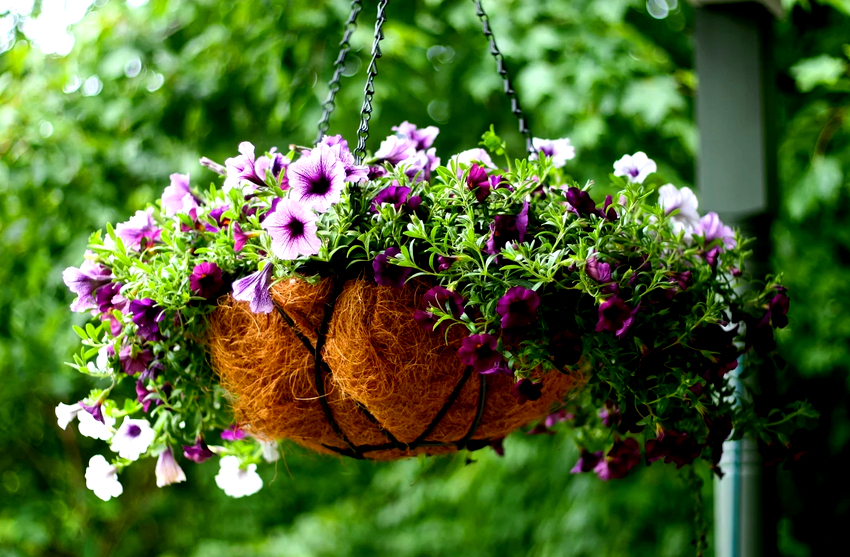
Correctly designed ampel flower catalogs always contain information about the sizes of buds and leaves.
Unfortunately, in many catalogs posted on the Internet, there are other plant species among ampel flowers. The reason is most often the desire of the authors to make the collection more extensive, or there is an obvious unfair attitude. In either case, you should not trust the information - it is better to turn to other sites where all the names and photos of hanging flowers for pots on the street will correspond to the declared look.
Flowers are able to decorate any, even the most gray building. It is not difficult to find the necessary plants, given their abundance in specialized stores. It is very important to create the necessary conditions for green pets. Only then will they fully demonstrate their aesthetic potential, endowing with splendor of greenery and a riot of colors.
